In 2015, thanks to the Baselworld jungle drum, I landed an appointment with a man named R. T. Custer. It’s his name, by the way, and he insists on the initials – his parents’ choice?– because he’s from an advertising background, and dammitall, that name sticks. We met at the Ramada, as it was then called, where free-floating watch-folk who wish to avoid the prohibitive costs of the fair’s booths run around with attaché cases filed with products that may or may not achieve breakthrough on the market.

Young, dynamic, crew cut, straight-laced, yet not, R. T. enthusiastically pitched me his products. They were a little different from all the power-watches I had seen at the fair. Vortic, an artificial name, had launched a collection of large timepieces assembled into clunky cases made up of two segments produced by direct laser metal sintering. The dials were mostly original vintage dials and featured the names of the old American Greats, like Elgin, Waltham, Illinois and…. Hamilton. What struck me most, however, was the story behind these timepieces: The movements were original Americn movements and some of the salvageable dials were being taken from pocket watches that had been scrapped for their gold and silver cases. Why not recoup this junk, recondition the movements, restore the dials that could be restored, leaving sometimes the fissures and chipped enamel as patina, and sell them.
He bought a farm in Colorado, hired a few people, including a watchmaker, and set about developing his business. A new and more coherent case was designed, a new collection was launched with the name Vortic on the dial (the Journeyman series). When I interviewed him for the second time in 2016 (for Wristwatch Annual 2017), he was ambitiously dreaming of making his own movements. By this time, the cases had been vastly improved. They were in one piece and the crown, large and with the appearance of an industrial , had been moved to 12 o’clock.
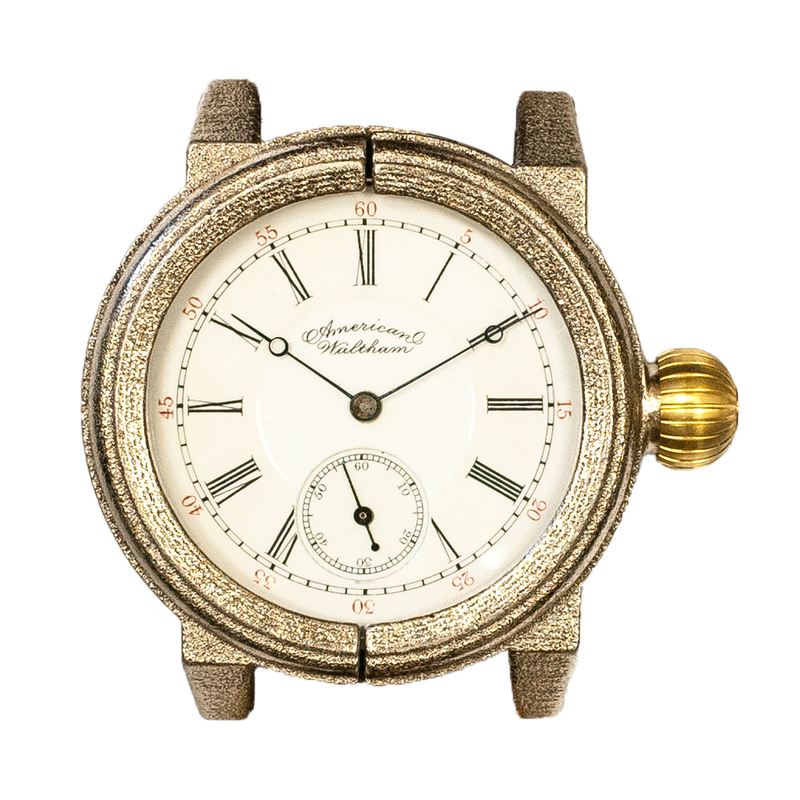
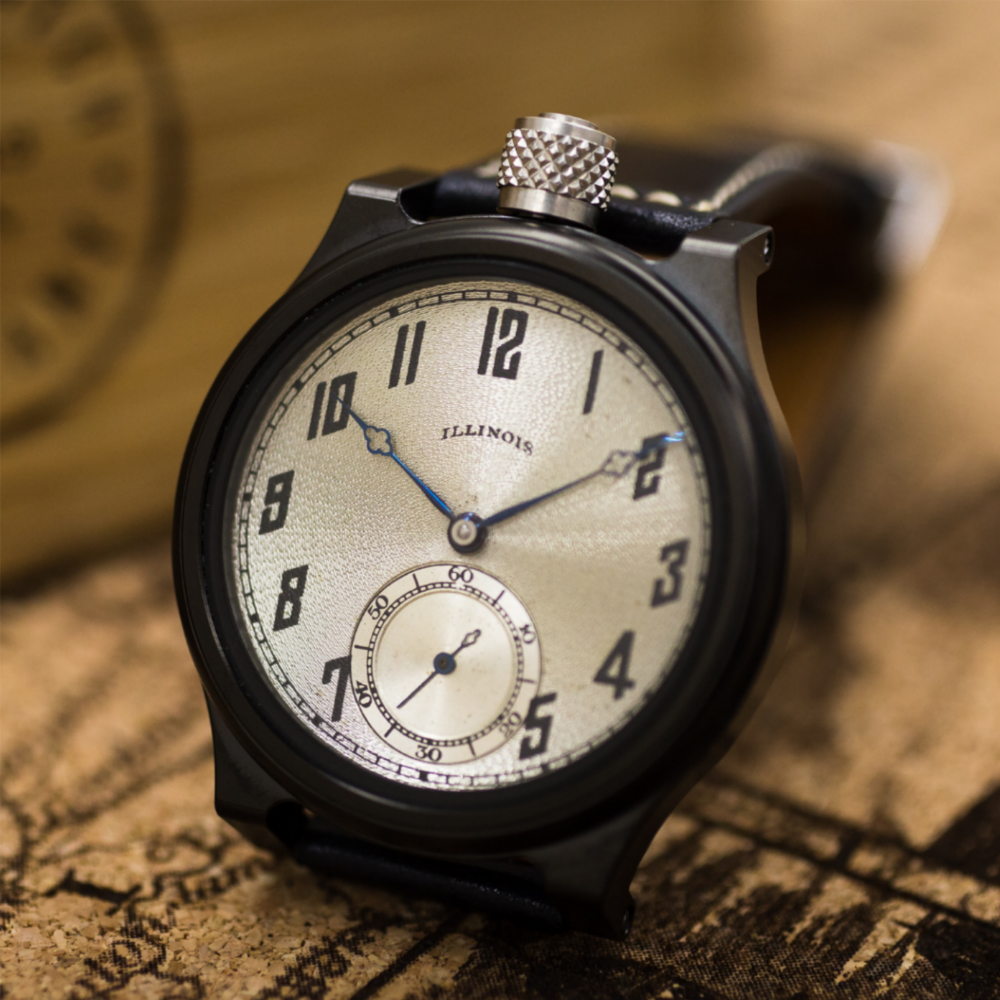
For the past three years, Vortic watches have had a separate chapter in my Annual. They are eminently recognizable due to their size, the visibly “old” dials, the protruding crown, and the fact that most of them bear the name of an old American brand. Their appeal is obviously the nostalgia so many feel about those “good ole days.”
So much for the American tale of “crazy idea makes big,” a tale that any Hollywood producer could turn into a moderately successful flic. The second tale is not so fun…
One day, RT received a gloomy letter. It came from lawyers representing Swatch, the Swiss-based giant, owner of such brands as Omega (yes!), Blancpain, Breguet, Harry Winston, Jaquet Droz, Longines, Tissot, etc, etc., etc. In their stable is Hamilton, and it wanted R. t. to cease and desist using the Hamilton name, which had appeared in an ad. In other words, a multi-billion-dollar behemoth of the industry was attacking some guy in Colorado. R.T. fought back as he could, almost going bankrupt in the process. He finally happened upon a law firm with strong trademarking experience and the case went to trial at the now famous (thanks to Trump and Barr) United States District Court for the Southern District of New York.
The story is well documented by Christopher Wood of BizWest in Colorado, so you can get the details here. The arguments essentially boil down to this:
“Vortic using vintage Hamilton watch faces constituted copyright infringement, and that the company was producing inferior knock-offs by mixing old Hamilton parts with modern parts so it would fit within a wristwatch case.
Vortic holds that the watches using the Hamilton mark are clearly distinguishable from modern Hamilton-branded timepieces because it only repurposes Hamilton’s American-made models decades before Swatch bought the brand, not the ones more recently made in Switzerland.”
-
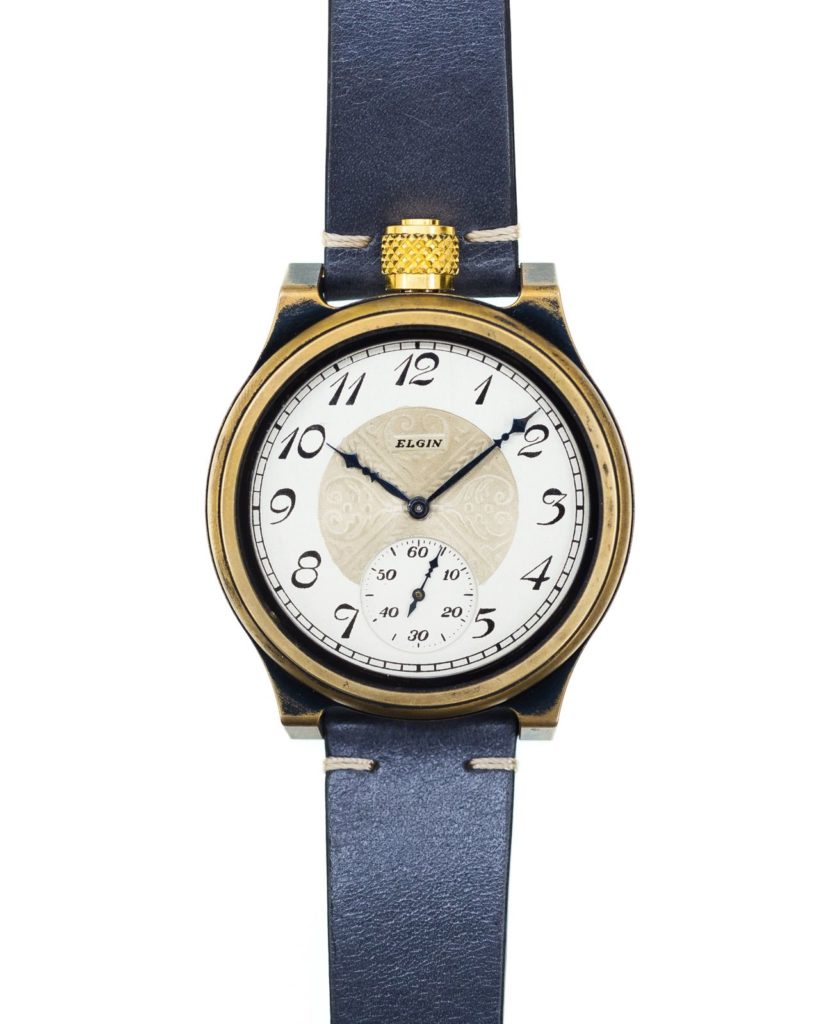
New Vortic. -
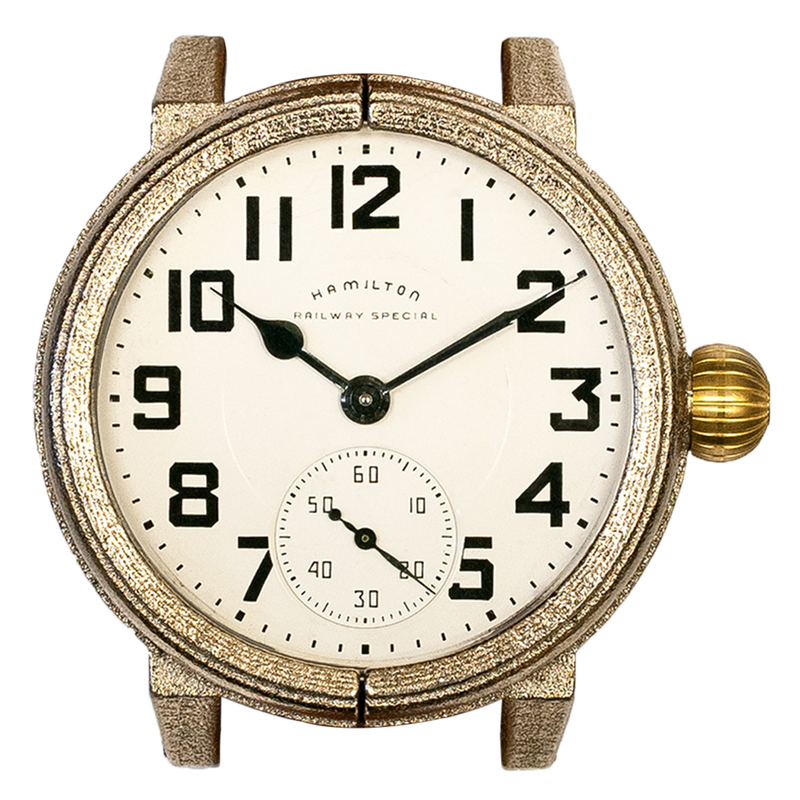
Old Vortic-Hamilton. -
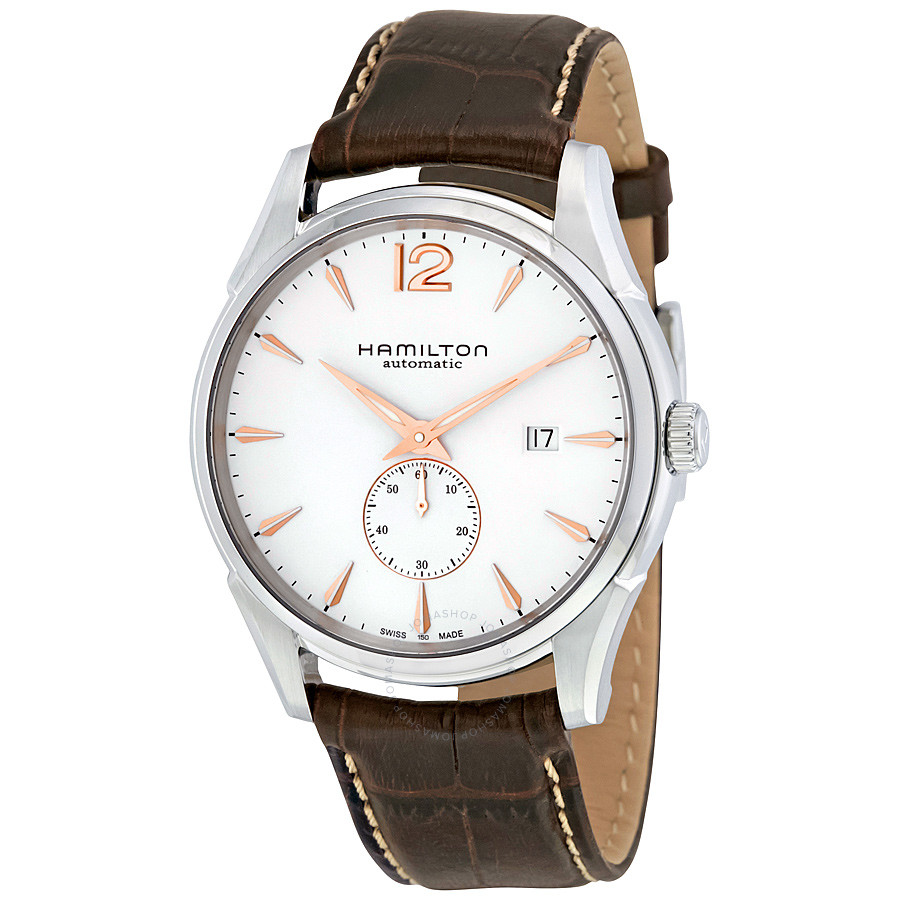
New Hamilton. -
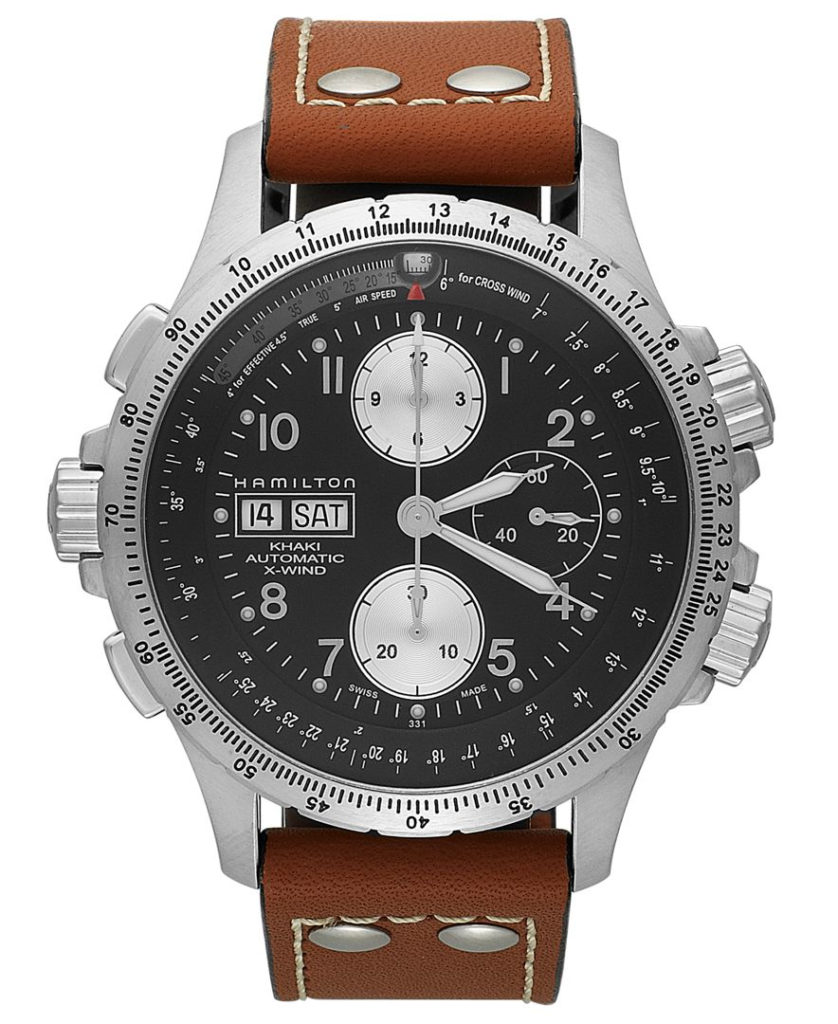
Another modern Hamilton…. any resemblance?
A verdict is still pending, and Hamilton has already stated it will appeal if it is not in their favor. Not very nice, but once the company decided to litigate, it had to see the “war” to the end, alas, and it has the money and the power to do so. In his article, “The Curious Case of Hamilton International Ltd. v Vortic LLC,”Allen Farmelo offers an in-depth and cogent examination of the issues involved and what the judge, Alison Nathan, will have to consider. Vortic claims it is “upcycling,” i.e., reusing/recycling older material, which can be seen as a “noble and fair pursuit, perhaps even one that honors and promotes those brands,” Farmelo writes. “Hamilton, on the other hand, sees Vortic’s use of Hamilton movements and dials as an infringement on their intellectual property. For Hamilton to prevail in these ongoing law suits, they will need to establish that Vortic’s re-purposing of the older Hamilton components constitutes trademark and/or counterfeit breaches as described in the relevant US Federal Laws on intellectual property—which, perhaps unsurprisingly, differ from those set out in the Swiss legal system.”
We’ll see.
But before we do, let me reproduce the post scriptum that Allen Formelo added to his reprinted article:
“I had pitched the story to many publications, and only International Watch was willing to go to print with it. The rejections I received came in the form of rather frank explanations that Swatch Group, which owns Hamilton, was too close to ad revenue sources. I didn’t see the problem, as long as one provides a balanced report that doesn’t take sides. For full disclosure, this story came to me through a conversation at Worn & Wound’s WindUp event in NYC with the folks at Vortic, but I quickly cut off conversations with them and instead began research and pitching.”
This one paragraph reveals one of the aspects of the business of writing about watches and business in general that can be terribly nerve-wracking. Any journalist being critical of the industry of certain brands or products, will get shut out. And since the industry is dominated by big groups, loss of access can become a real problem. So writing about watches is at times reminiscent of the story “How the Soviet Robinson Crusoe Was Written,” by Ilya Ilf and Yevgeni Petrov.



One Reply to “In the Vortic: Two American Tales in One”